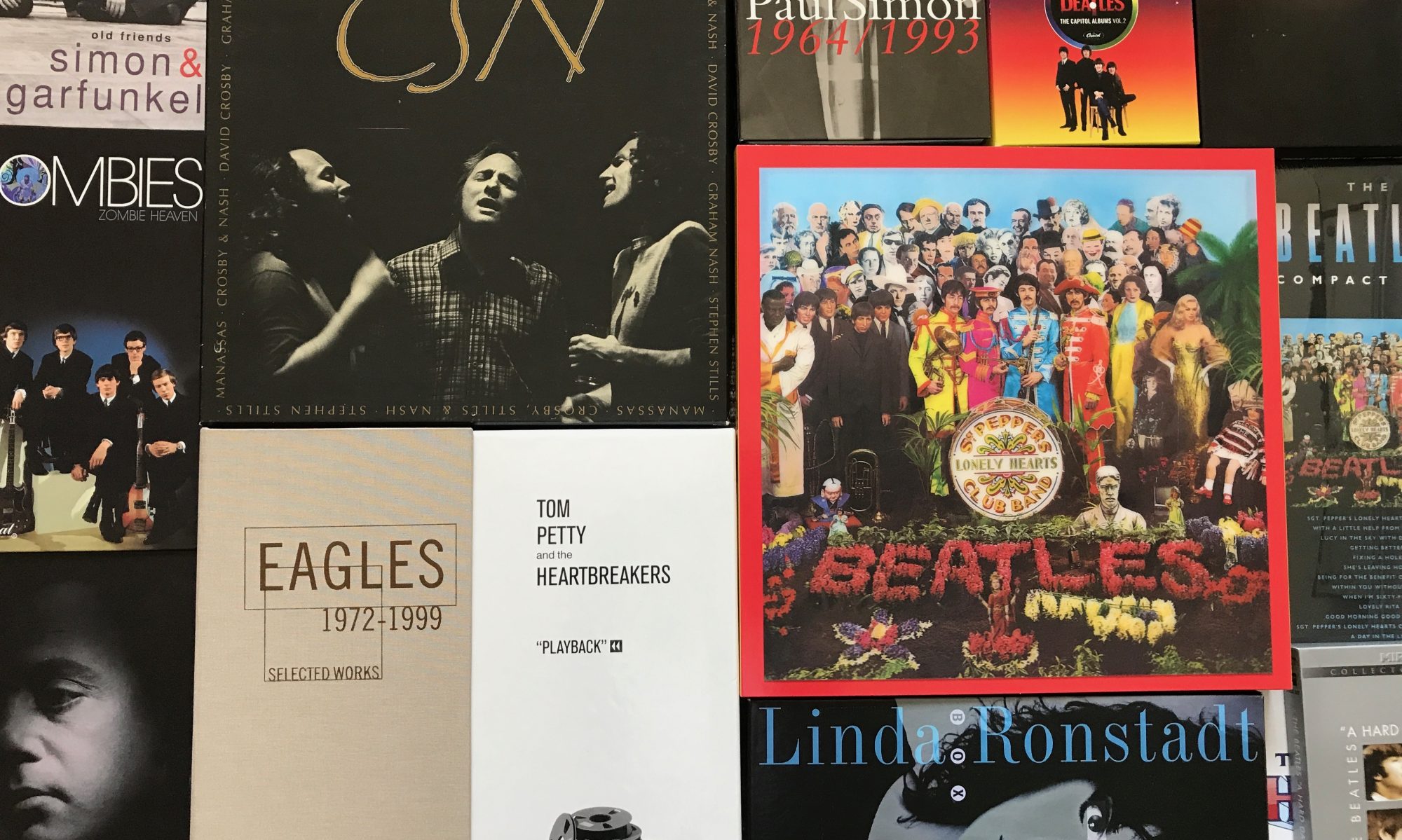You hear it all the time. People still refer to recording as “taping”. Did you “tape” that show? Are there “tapes” of that conversation? Using tape for audio and video recording has been around for decades, but it’s all digital now.
My dad led me into a lifelong interest in recording. He always owned tape recorders and microphones. He was an excellent singer who recorded 40 square dance records (45’s) based on popular songs, such as “Those Were The Days”. They were recorded in professional studios, but to record live performances, he used a portable recorder like this one.
Dad let me use the recorders too, and taught me how to edit tape. That meant physically cutting the recording tape at an angle to delete something or splice-in another piece of tape. The splices were held together by special adhesive tape. This same basic editing technique was used by professionals.
That amazing edit George Martin and engineer Geoff Emerick used to link two different versions of “Strawberry Fields Forever” (at about one minute into the song) was done the same way. It’s so important to transfer classic tape recordings to digital, because those splices are eventually going to fail.
My first broadcast journalism class at college required me to record an interview on reel-to-reel tape, and then physically edit the tape into a concise news feature, including adding music or sound effects. When I got a job in radio news, I still edited tape, but mostly by dubbing the comments we wanted from a portable cassette recorder onto a broadcast tape cartridge to use during the live news reports.
Today it’s all digital recording. It looks like most reporters are using phones or other small digital devices. The quality is better than tape.
For music editing, I use Apple’s GarageBand. But for what?
Some live recordings posted online have noise or applause at the beginning that needs to be trimmed off. Or, maybe the applause at the end needs fading. Even purchased live recordings often need such editing.
 (Neil Young performing “This Old House” at Farm Aid.)
(Neil Young performing “This Old House” at Farm Aid.)
Neil Young is one of my favorite artists. When he first played “This Old House” at Farm Aid, the TV network started to go to a break during the second chorus, but then decided to stay with the song. That left a hole and some announcer’s talk in the middle of the song. I had recorded the performance, and I used GarageBand to place a copy of the first chorus seamlessly into the spot of the second chorus. The song is complete, and now my favorite version of his song is in one of my Neil Young Live playlists. The multi-channels feature of GarageBand makes such editing possible. Here it is:
 When The Beatles’ Anthology series was released, it contained a take of “Good Morning, Good Morning” without those words in it. I really liked it. The lyrics took on a more serious tone, and Ringo’s drum part was accented. The problem was it sounded sparse, because the horns and lead guitar weren’t included. GarageBand let me sync the original version with this take, and put in the missing horns and guitar. This new version doesn’t take the place of the original, but it sounds cool. Here it is:
When The Beatles’ Anthology series was released, it contained a take of “Good Morning, Good Morning” without those words in it. I really liked it. The lyrics took on a more serious tone, and Ringo’s drum part was accented. The problem was it sounded sparse, because the horns and lead guitar weren’t included. GarageBand let me sync the original version with this take, and put in the missing horns and guitar. This new version doesn’t take the place of the original, but it sounds cool. Here it is:
When Brian Wilson shelved the Smile album by The Beach Boys in 1967, the songs and pieces of recordings found their way to bootlegs. Fans had no idea how to assemble those fragments into an album. Finally, Brian released a solo version of Smile in 2004. Then we could assemble The Beach Boys version (which is better) using GarageBand or other editing tools. Here is a 29-minute “Best Of Smile”, with the songs segued together:
One more sample. On Matchbox Twenty’s Mad Season album there was an unlisted orchestral reprise of the song “You Won’t Be Mine”. It’s excellent, but it makes an even better introduction to the song. Editing allowed me to place the dramatic orchestral piece first, and then over the final fading chord, start “You Won’t Be Mine” with that soft piano opening. It’s magic. Here it is:
Those are just some of the ways being able to record and edit makes the music even more satisfying.
Of course that just barely scratches the surface of what Garage Band type apps can do. Musicians are recording entire albums. Everyone can own a recording studio!
Oh, and a friend recently told me how much she enjoyed the music I had given her by saying “Thank you for the tapes.” They were CD’s.




